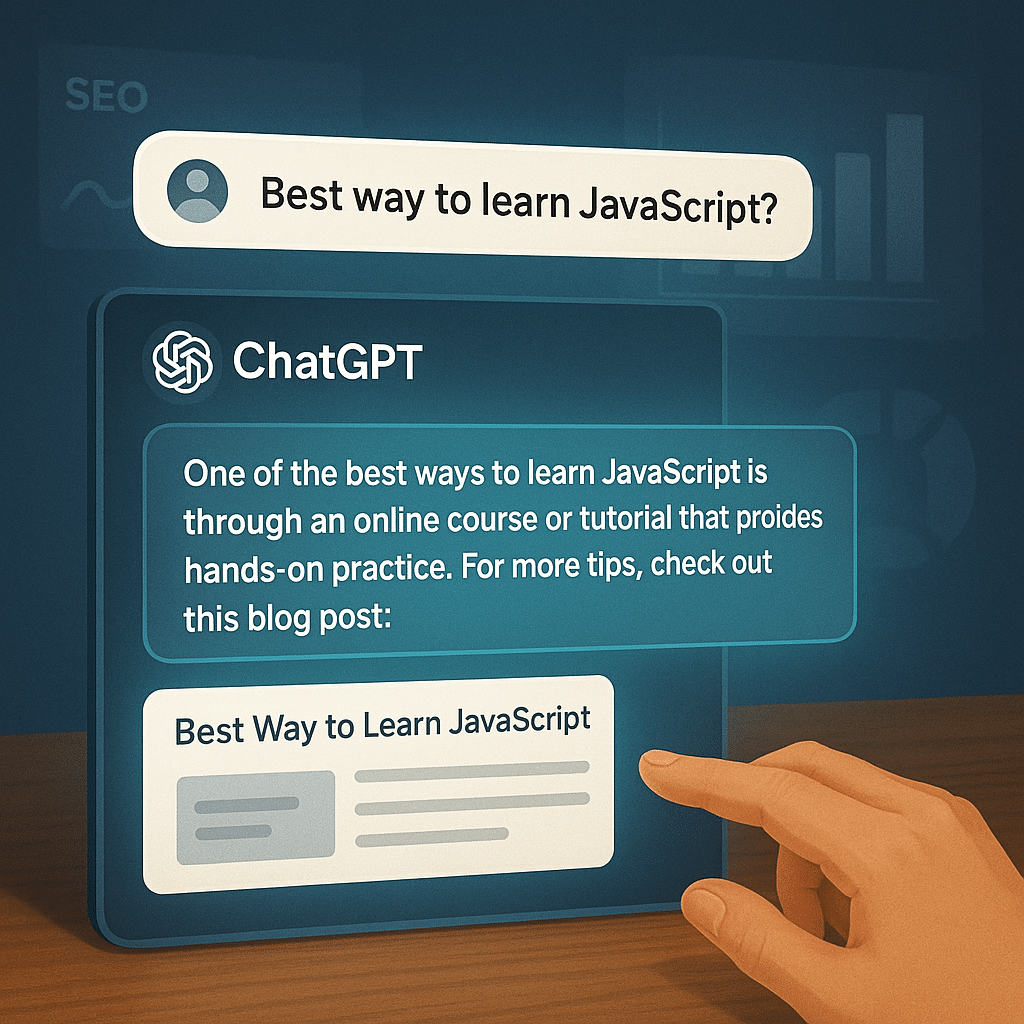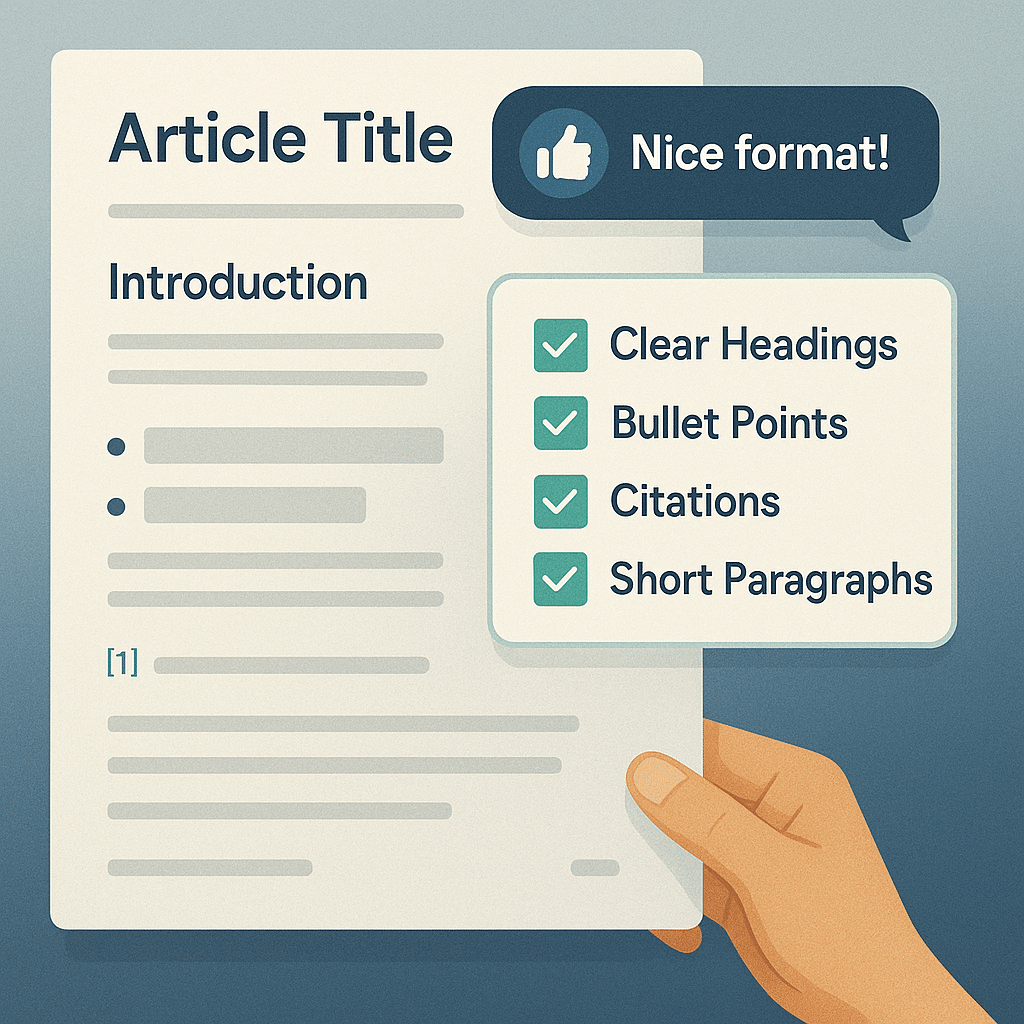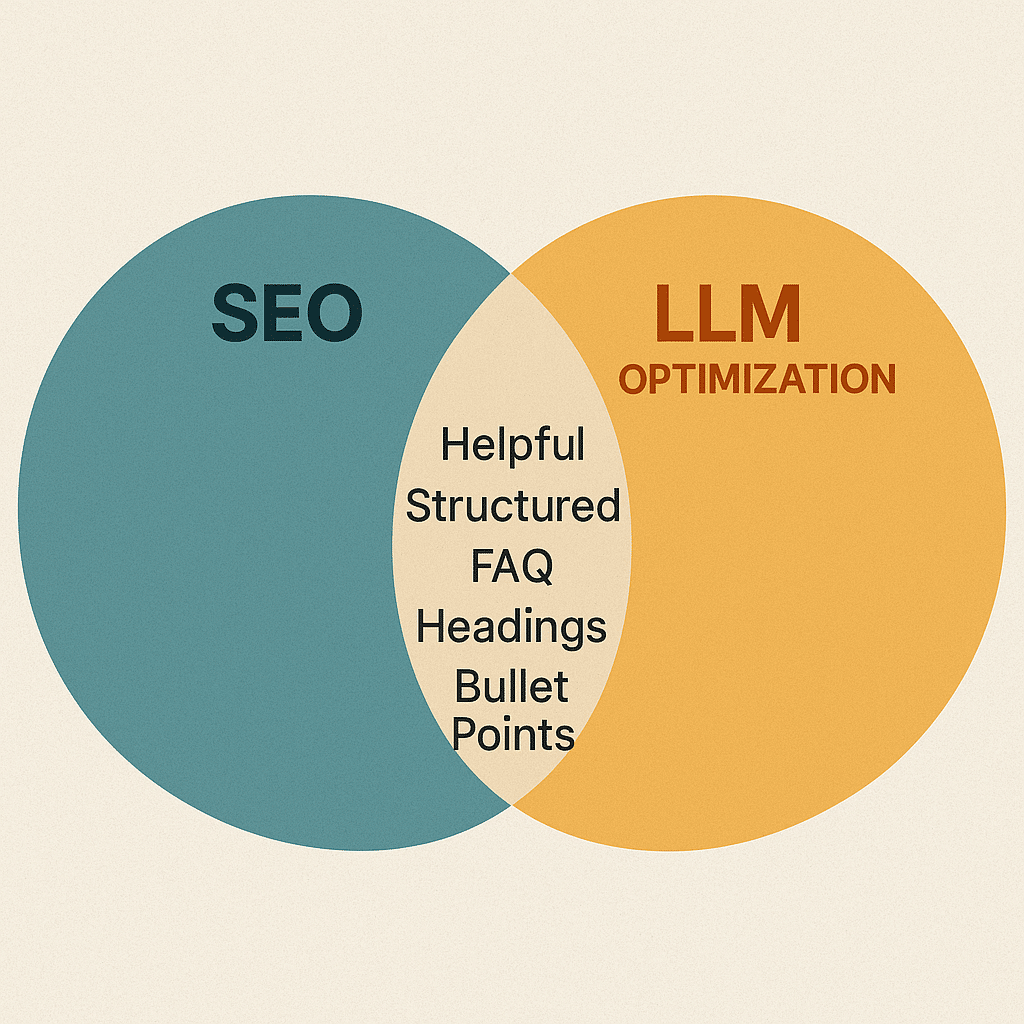How to Ensure Your Content Appear in ChatGPT Answers Effectively
ChatGPT is everywhere now, competing with traditional search engines . People use it to ask about recipes, plan trips, solve tech issues, or even draft emails. When someone asks—“Hey ChatGPT, what’s the best way to learn JavaScript?”—they expect a reliable, informative answer. And if your content shows up in that answer, you win. Naturally, businesses, bloggers, and educators all want to appear in ChatGPT answers.
But how does that even work? Traditional SEO isn’t enough. You need to create great content that aligns with the training data and methods of language models, while still being human-readable, engaging, and truthful.

This guide breaks it down step by step, with clear explanations, checklists, and external links to help you get noticed.
What ChatGPT and Other LLMs Actually Use
ChatGPT is a "large language model" (LLM). It was trained on stacks of text—blogs, Q&As, academic articles, and more. There’s no real-time search; ChatGPT relies on what's in its memory (until its cutoff date, often around 2023). That means:
Relevant, evergreen content is more likely to get drawn from its knowledge base.
It does not crawl the web like Google—so ranking on Google isn't enough.
Your content needs to resemble trusted, authoritative, well-organized text—because models learned from those patterns.
1. Focus on Quality—Good Content Wins
Give ChatGPT something worth sharing:
Well-structured writing: use headings, bullet lists, simple sentences.
Clear answers that directly address likely questions.
Authority: credible reasons, examples, names, sources.
Clarity: simple explanations—even for complex topics.
✅ Quick checklist:
These writing choices align with patterns ChatGPT learned from quality websites, making it more likely to echo your style.

2. Use Keywords ChatGPT Understands Naturally
Think about how people ask questions, not how algorithms index:
- “How to fix iPhone storage full”
- “Best way to save energy at home”
- “Explain blockchain in simple terms”
Don’t worry about SEO-stuffed meta tags—focus on real user phrases and answer complex questions clearly. Use those same phrases in headings and bullet points.
Example:
When someone asks the same question :
“How can I improve focus while working?”
Your page might have a section titled:
“How to Improve Focus While Working — 5 Practical Tips”
That exact phrasing makes it easy for a model to match content to query.
3. Provide Self-Contained Answers
ChatGPT responds best to pages that answer questions fully—even if they link out for depth.
Imagine you want to rank for:
“What are the symptoms of vitamin D deficiency?”
Your content should include:
This helps ChatGPT verify and condense your content naturally in its reply and cite your article.
4. Include Examples, Scenarios, and Stories

Storytelling adds context and helps LLMs “connect the dots.”
If you’re teaching project management, add scenarios:
“Imagine you're leading a 5‑person team working remotely— here's how you’d use Trello...”
These real-world details boost helpfulness and may be recognized as practical content.
5. Use Structured Data and FAQ Format
While ChatGPT doesn’t read schema markup directly, structured writing does help:
- Use FAQ sections: Q&A style between H3 and paragraphs.
- Use numbered lists, like “5 Steps to Resolve DNS Errors.”
- Use clear headings like “Step 1: Check DNS Settings”.
For example, an FAQ section:
Q: How often should dogs be vaccinated?
A: Puppies typically need vaccines at 6, 8, and 12 weeks... (expand)
Models pick up on that complete Q&A structure easily.
6. Build Authority with References
Include quick references to trusted sources:
“According to the World Health Organization, adults should get at least 150 minutes of moderate exercise each week.”
That indicates credibility and minimizes the chance of presenting wrong information . ChatGPT often echoes statements backed by recognized authority. Citations help.
7. Optimize for Evergreen Topics

Since ChatGPT’s knowledge cutoff isn’t live, focus on timeless subjects:
- Life skills, mental health, productivity tips, coding fundamentals, basic science, recipes.
- Avoid “latest iPhone specs” or “today’s bitcoin price.”
Evergreen content stays relevant and appears reliable.
8. Watch How People Phrase Things
Use natural language:
“What’s the easiest way to clean a coffee stain on carpet?”
Follow up with your answer. ChatGPT learns from those Q&A samples.
Tip: Check StackExchange or Reddit questions. Use their phrasing in content.
9. Help ChatGPT Cite Your Work
You can’t force it—but you can gently nudge:
“See my guide, ‘5 Steps to Learn Guitar’ for a deeper dive. Reference: [MySite]”
It’s subtle and often works. When ChatGPT pulls in your phrasing, it may hint at the resource.
10. Be Accurate and Honest
Fact-check everything. LLMs look authoritative—they might pass on errors. Double-check data and link to credible sources like WHO or NIH.
ChatGPT respects accuracy. If your content contains inaccuracies, it may avoid it.
11. Use Simple Language and Conversational Tone
LLMs mimic human writing. If your content is heavy jargon or stilted, it's less likely to be shown. Instead:
- Use “you” voice.
- Explain terms.
- Add a friendly vibe: “Don’t worry, it’s easier than it seems!”
That aligns with how ChatGPT talks.
12. Offer Snippets for Quick Answers

Short, crisp summaries help:
Key Takeaways:
- Use bullet lists for clarity.
- Offer examples.
- Include headlines, references, FAQ.
That “TL;DR” section helps both readers and ChatGPT quickly capture your content.
13. Promote Through Sharing & Links
Though influence is indirect (no direct crawling), popularity matters.
- Share on social media.
- Earn backlinks.
- Get cited.
- Encourage engagement.
If your content is known and used, it's more likely the LLM encountered it in its training—boosting chances to be the top result.
14. Update Frequently
Fresh, correct info matters—even evergreen. Minor updates show quality.
Log date last updated:
“Updated June 2025 to reflect latest ChatGPT practices.”
That helps ensure relevance—models may have seen your updated content.
15. Provide Unique Value and Perspective
Go beyond generic answers. If everyone says “Drink water for focus,” go deeper:
Explain why water helps focus, cite studies, mention exceptions.
When your content stands out, the model may rank it higher in its internal learned ranking.
16. Track ChatGPT Mentions (Indirectly)
There’s no direct analytics, but you can:
- Look for backlinks after updates.
- People quoting your site in ChatGPT macros.
- Social mentions and referral spikes.
Consider setting Google Alerts for your brand name with “ChatGPT”.
17. Combine Chat & SEO Strategy

This is a multichannel world—combining both is smart:
- Optimize content for being helpful (for both SEO and AI).
- Include FAQs, bullet lists, summary sections.
- Add schema where possible.
- Track performance in both traditional traffic and audience feedback.
18. Work With the AI Cycle
ChatGPT evolves—be agile:
- Note new features like GPT-4T with math, cite suggestions, plugin citations.
- Provide formulas, footnotes, citations.
- Ensure your content matches upgraded expectations.
What Not to Do 😬
Don’t… | Instead… |
|---|---|
Stuff page with tons of SEO keywords | Focus on readability and real questions |
Use robotic tone | Write like a real person |
Publish outdated info | Keep content accurate and current |
Overlink or spam | Use a few trusted references thoughtfully |
Real-Life Example: Making It Work
Bottom line: If your article “How to beat jet lag” is friendly, structured, uses headings (like "Jet Lag Quick Fixes"), cites WHO sleep tips, and includes bullet points plus examples ("If you land on Friday, do this…"), chances are good ChatGPT will surface it for queries like:
“What’s the easiest way to beat jet lag fast?”
You’ve done the work to match how AI thinks, and your content can contribute and shine.

Tools & Resources
- OpenAI API documentation – helps you see how LLMs may use content.
- Schema.org structured data – great for general content structure.
- Google Search Console – track ranking and CTR.
- Google Trends – catch trends in phrase usage.
- AnswerThePublic – find real user questions.
- Hemingway Editor – simplify reading level.
Summary – Why It Matters Now
The days of creating thin content just to hit SEO are gone. LLMs reward content that is:
- Helpful
- Accurate
- Well-structured
- Honest
As AI tools become part of everyday research, if ChatGPT often draws from your writing, you're building authority in the AI age—not just search.
Final Checklist to Make Your Content AI-Friendly
By doing this, you'll boost chances that the next time someone asks ChatGPT a question, your content gets pulled—and your brand gets the spotlight.
Curious about optimization tools? You might explore helpful platforms like Keyword Tool or MarketMuse to refine structure and relevance.
